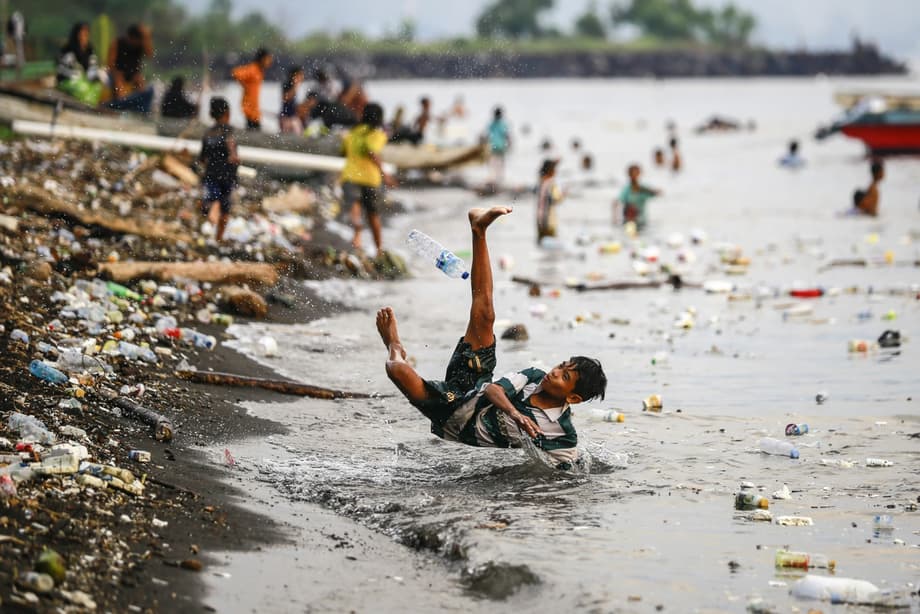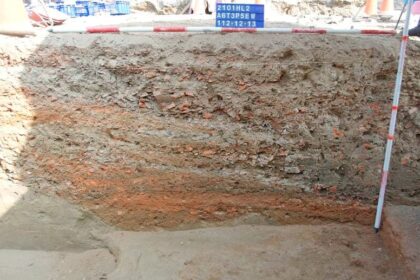Rain brings plastic particles to Jakarta
Plastic particles are falling with the rain in Jakarta. A government backed research team has confirmed microplastics in samples of rainwater collected across the capital, adding a new dimension to the city’s pollution challenge. The finding has prompted officials to expand monitoring, improve waste management, and urge residents to cut plastic use that feeds a growing cycle of airborne and waterborne contamination. Scientists warn that tiny plastic pieces, carried by wind and washed from the air by rainfall, can enter human bodies through breathing and drinking, and can persist in soils and waterways long after storms pass.
Researchers from Indonesia’s National Research and Innovation Agency, known as BRIN, spent months measuring how much plastic descends from the sky onto the urban landscape. They observed airborne fibers and fragments outdoors that were then scavenged by raindrops. The analysis found that microplastics are present in a wide range of shapes and materials that reflect everyday sources, from clothing fibers and tire wear to pieces shed by packaging and construction materials. The team detected salt sized particles in North Jakarta and reported higher deposition during the rainy season. The study’s lead researcher said the situation likely worsens as plastic use grows, and that the dry season can be risky for inhalation because there is less rain to remove particles from the air.
What the scientists measured
The Jakarta study tracked atmospheric microplastics for a full year using rain collection devices and laboratory analysis of shape, size, and polymer type. The deposition rate ranged from 3 to 40 particles per square meter per day, with an average of about 15 particles per square meter per day in the coastal urban area. During months with frequent rainfall, the rate was around four times higher than during the dry months. Fibers dominated the samples at roughly eighty six percent, and most pieces measured between 300 and 500 micrometers, which is roughly the thickness of a grain of salt. The main polymers identified included polyester, polybutadiene, polyethylene, and polystyrene, a mix that mirrors textile shedding, traffic sources, and general plastic litter. The study concluded that the majority of particles likely came from local activities within the city rather than distant sources carried over long range.
Researchers also reported clear visual evidence of small plastic fibers floating in outdoor air in Jakarta before rainfall events. In one coastal site in Ancol, particles around 0.3 to 0.5 millimeters long were found in rain samples. The instruments used by the team were sensitive to particles larger than about 300 micrometers, which means far smaller microplastics and nanoplastics were not counted. For comparison, people can inhale dust particles down to around 10 micrometers, which are much smaller than the study’s detection limit. The result is a conservative picture of the burden of airborne plastics that fall with the rain. The work was documented in a peer reviewed paper available through ScienceDirect, which outlines the seasonal pattern and polymer signatures of the particles found in Jakarta’s atmosphere. Readers can see a summary of methods and results here: the atmospheric microplastics deposition study.
How microplastics travel through air and rain
Microplastics form when larger plastic goods degrade into tiny pieces. They can also be manufactured intentionally as small items, such as industrial pellets or cosmetic microbeads. In cities, the most common airborne pieces are fibers shed from synthetic clothing during wear and washing, particles from tire and road abrasion, and fine fragments from litter that breaks down in sunlight and heat. Open burning of trash adds another source of micro sized particles. Wind lifts these particles and keeps them suspended, especially on dry days with traffic turbulence. Rain clouds then act as scrubbers. Droplets collide with particles in the air, carry them downward, and deposit them onto roofs, streets, parks, and water surfaces. Once on the ground, these particles can be flushed into drains, rivers, and Jakarta Bay, or can dry and become airborne again.
The BRIN team’s finding that deposition spikes in the rainy season matches what would be expected from this scavenging process. The cycle does not end at the coastline. Pieces carried by rivers into the bay can be lifted again by wind and sea spray, then return inland through the lower atmosphere. This movement links land, air, and water, which is why scientists now talk about a plastic cycle that interacts with the water cycle. Dry season conditions bring a different concern, since less rainfall means fewer opportunities to wash particles out of the air. That can raise exposure through inhalation when dust and fibers accumulate in outdoor air and indoor environments.
Muhammad Reza Cordova, a researcher at BRIN who has studied microplastics in the capital’s air and rain, has described how plastics move through this loop between sky and surface.
The plastic cycle does not stop at the sea; it is carried by the wind into the sky and descends again with the rain.
Signs in rivers and groundwater
The picture in the air aligns with measurements in Jakarta’s waterways. A separate investigation during the pandemic measured microplastics in nine rivers that discharge into Jakarta Bay and detected particles at every sampling point. Concentrations ranged from about 4 to 23 particles per cubic meter. Abundance was higher in the rainy season, which fits the increase in stormwater runoff and the wash off of particles from streets and open spaces. Over time, the study found more fibers made of polypropylene, a material used widely in masks and other protective gear during the pandemic, which points to a waste stream that spills into the water system when disposal is unmanaged.
Another study looked below ground and found microplastics in urban groundwater in West and South Jakarta, a concern in a city where many households and small businesses rely on wells. In that analysis, concentrations ranged from 28 to 236 particles per liter. Fragments were most common, followed by fibers, films, and small beads. The authors identified materials that included polyethylene along with cellulose based fibers such as tencel and cellophane, indicating a mix of plastic and semi synthetic fibers in the samples. Sites closer to temporary waste disposal locations tended to show higher microplastic counts than those farther away. The results point back to waste handling on the surface, where exposure to sun, heat, and water breaks down discarded goods into fine particles that seep downward with rain and leachate or move laterally through drainage and canal networks before infiltrating shallow aquifers.
Rivers, groundwater, and rain are connected by daily water flows and human activity patterns. When plastics degrade in open dumps, at landfills that lack full coverage, or on streets and vacant lots, small particles can travel through all three media. That helps explain why researchers are now calling for more comprehensive monitoring that includes air, surface water, and groundwater rather than treating each pathway in isolation.
Health risks and what scientists know
Microplastics can enter the body in two main ways, through ingestion and through inhalation. In water and food, larger fragments pass through the gut, while some smaller particles can cross into blood and reach organs. In the lungs, the smallest particles can deposit in the deep airways. In both routes, size matters. The BRIN rain study detected pieces at or above about 300 micrometers, but many airborne particles are far smaller. Those include nanoplastics that are so tiny they require specialized instruments to detect. Laboratory studies have shown that microplastics can trigger inflammation, oxidative stress, and tissue irritation in cells and animal models. Plastics also contain additives such as plasticizers, flame retardants, and dyes. Some of these additives are endocrine disruptors when they accumulate in the body. Microplastics can also pick up other pollutants like heavy metals and organic chemicals as they move through air and water.
Researchers are working to quantify average human exposure. One 2024 analysis by academic researchers estimated that Indonesians may ingest around 15 grams of microplastics each month, which would rank among the highest in the world. That figure depends on local diets, water sources, and environmental concentrations, so exposure can vary widely within a city. Scientists caution that more research is needed to link exposure levels to specific clinical outcomes. Health agencies advise pragmatic steps to reduce exposure while infrastructure and regulations catch up.
Indonesia’s Health Minister, Budi Gunadi Sadikin, has urged residents to reduce risk during periods when airborne particles are high.
Wear a mask when outdoors, especially during and after rainfall events. The best prevention starts at the source by reducing microplastic pollution before it spreads.
What officials are doing now
Jakarta’s environment authority responded to the BRIN findings with a pledge to cut single use plastics, improve waste collection, and extend monitoring into air and rainwater. City officials are preparing a wider network of sampling points to track seasonal changes and help identify hotspots that merit cleanup or enforcement. The goal is to establish a baseline for airborne plastics, detect trends, and support stronger policies on packaging and waste handling across the capital.
Asep Kuswanto, who heads the Jakarta Environment Agency, framed the discovery as a call to action.
We consider the finding as an environmental warning that requires swift and collaborative responses. Plastic pollution is no longer isolated in seas or rivers. It has now reached the skies above Jakarta.
At the national level, Environment Minister Hanif Faisol Nurofiq called for an end to open dumping at final disposal sites and for stricter oversight of waste operations. He linked microplastics in rainwater to the continued practice of leaving large volumes of mixed waste exposed to sun and rain at massive facilities such as Bantargebang outside Jakarta.
This finding highlights the urgent need to end open dumping at waste disposal sites across the country.
Officials say they are moving toward sanitary landfill systems that cover waste to reduce weathering and install gas capture to lower fire risk and emissions. Regulators are also weighing thresholds for microplastics in air and water, more testing of industrial emissions, and possible changes to waste import rules to limit the inflow of plastic that cannot be safely handled. BRIN researchers have encouraged the government to set a reference level for airborne microplastics so that air quality programs can treat this pollutant alongside fine particulate matter and ozone.
Can Jakarta cut plastic at the source
Scientists and policymakers largely agree that the most effective response begins long before a particle reaches the sky. Reducing plastic at the source lowers the number of fibers and fragments that can break off and circulate. Cities often start with retail measures that target common items like bags, straws, and single use cutlery, paired with better access to reuse options. A second step is producer responsibility. That can include deposit return systems for bottles and cans, as well as obligations for companies to finance collection and recycling for the packaging they sell. Programs that standardize materials and simplify packaging can also make it easier to recover and recycle plastics without creating more waste streams.
Textiles and tires are two of the largest sources of microfibers and microparticles in urban air. Governments can encourage washing machine filters that capture fibers before they reach drains, and building codes can require laundry filters in new apartments and dormitories. Municipalities can pilot road dust management that specifically addresses tire wear particles, including better street sweeping along major corridors and sediment capture in storm drains. Open burning of household trash remains a stubborn source of airborne particles and should be replaced with reliable collection and safe disposal. Jakarta officials have also highlighted plans for waste to energy facilities to reduce the volume of unmanaged waste, while environmental experts stress the need to prioritize waste reduction and safe containment to prevent new pollution.
How residents can reduce exposure
No single action can eliminate exposure to microplastics, but several practical steps can limit it. Health officials advise wearing a well fitting mask outdoors on days with visible dust or after rainfall, when particles can settle and then resuspend. Keeping indoor spaces clean matters because indoor dust is a major source of inhaled fibers. Vacuuming with a unit that has a high efficiency filter, damp mopping floors, and laundering bedding and curtains regularly can reduce fibers in the home. Ventilating indoor spaces when outdoor air quality is good also helps.
Households can reduce microplastics released from laundry by washing full loads at lower spin speeds, using cold water cycles, and using a lint filter or external microfilter for the washing machine. Choosing durable goods and clothing that shed less, repairing items instead of replacing them, and avoiding open burning of trash will cut the flow of particles into the air and water. For drinking water, many consumers use point of use filters certified for particle removal. Residents can also support neighborhood efforts to separate organic waste from recyclables and to keep plastic out of drains and canals. These steps do not replace the need for citywide action, but they can reduce exposure and help ease the load on shared infrastructure.
Key Points
- BRIN researchers detected microplastics in Jakarta’s rainwater, with airborne fibers and fragments washed from the sky by rainfall.
- Deposition ranged from 3 to 40 particles per square meter per day, averaging about 15, with rates roughly four times higher in the rainy season.
- Fibers made up around eighty six percent of particles, mostly 300 to 500 micrometers in size, with polymers including polyester, polybutadiene, polyethylene, and polystyrene.
- Microplastics were observed floating in outdoor air before rain and were found in salt sized pieces at a coastal site in Ancol.
- Rivers that flow into Jakarta Bay carried 4 to 23 particles per cubic meter, and urban groundwater contained 28 to 236 particles per liter, with higher counts near waste sites.
- Scientists warn that inhalation and ingestion of microplastics may cause inflammation and other health effects, and that additives in plastics can disrupt hormones.
- A 2024 analysis estimated that Indonesians may ingest about 15 grams of microplastics per month, although exposure varies widely.
- Jakarta’s environment agency is expanding monitoring and pushing to cut single use plastics, while national officials call for an end to open dumping and stronger waste oversight.
- Experts recommend upstream measures such as producer responsibility, laundry fiber filters, and better road dust control to reduce emissions of microplastics.
- Residents can lower exposure by wearing masks on dusty days, keeping homes clean, using water filters, and avoiding burning trash.












